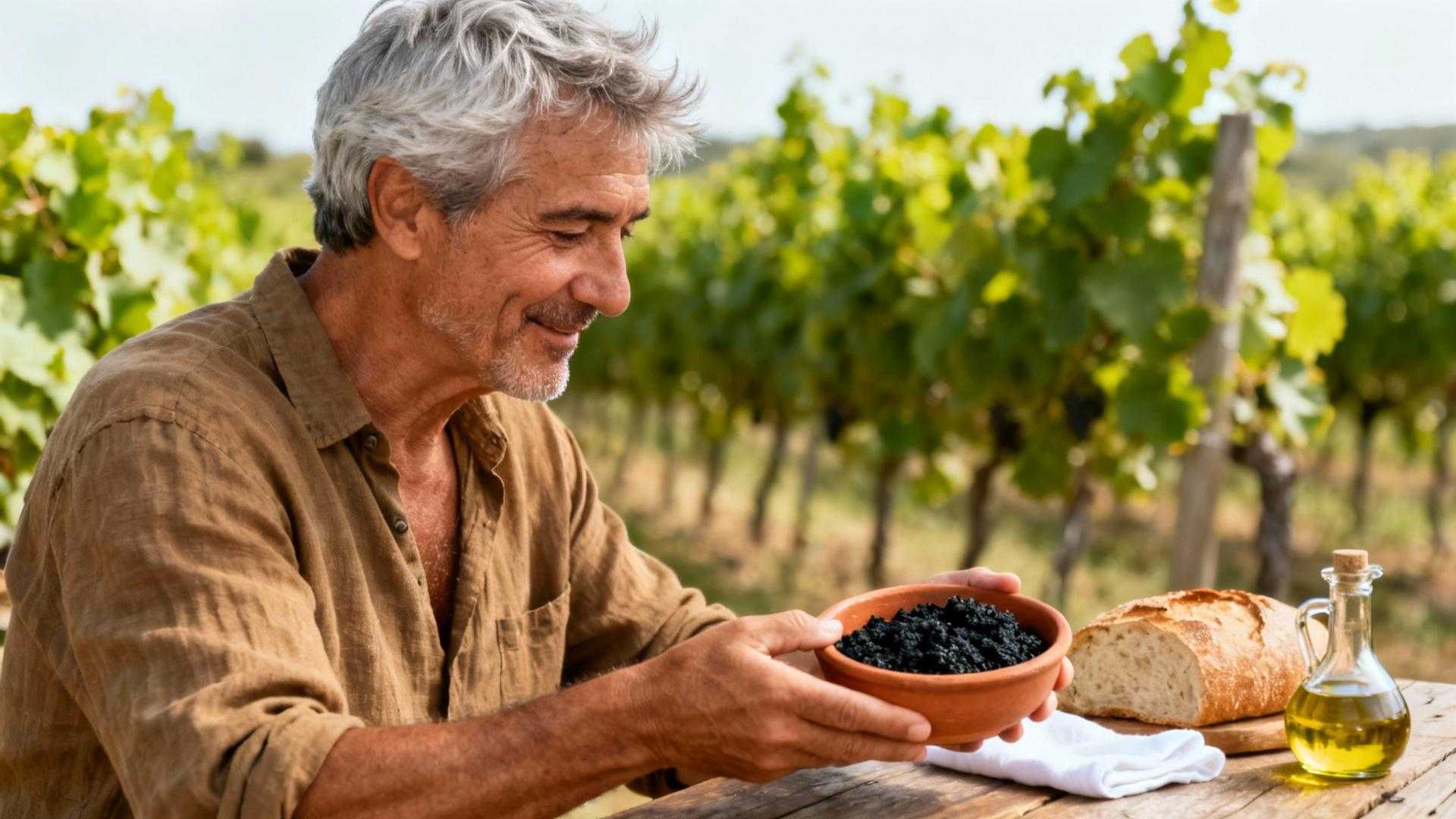Dawn breaks over Lacoste’s stone terraces while tourists in Châteauneuf-du-Pape pay €35 for structured wine flights. Here, a local vigneron places homemade tapenade on our table without discussing prices. This is Provence’s unspoken food culture where 5,500 Luberon residents eat when vineyards become dining rooms.
The Terrace Where Vignerons Break Bread
Café de France’s shaded terrace overlooks endless vine rows toward Bonnieux’s hilltop silhouette. Golden limestone walls radiate midday heat while cicadas sing from lavender borders. No formal service exists—locals greet the proprietor by first name.
Domaine de Mourchon’s panoramic terrace sits at 400 meters elevation above the valley floor. Harvest workers arrive at 11:30am, dust-covered from morning vine work. They don’t order from menus but accept whatever emerges from the kitchen.
The scene defies wine country expectations. Plastic chairs replace designer furniture while authentic cooking traditions trump Instagram aesthetics. Rosemary scent mingles with fermenting grapes from nearby caves.
What Actually Arrives on Provençal Vineyard Tables
These meals aren’t curated experiences but seasonal necessity translated into art. Yesterday’s bread appears with first-press olive oil from century-old groves. Local AOC varieties like Aglandau never reach export markets.
The Olive Oil That Never Leaves the Valley
Vignerons serve oil from plastic containers, not decorative bottles. The ritual involves bread rubbed with garlic, dipped in green-gold oil, topped with fleur de sel. This oil costs €9.50 per liter at vineyard tables versus €28 in tourist shops.
Tapenade Made This Morning From Last Year’s Harvest
Black Nyons olives get crushed with capers, anchovies, and estate olive oil. Served in terracotta bowls, the paste tastes bitter, briny, intensely Provençal. Nothing resembles supermarket versions with added preservatives and artificial flavoring.
The Unwritten Rules of Vineyard Dining Locals Follow
Meals last 2+ hours minimum during harvest season. You don’t order rosé in October—locals drink it year-round but favor reds with food. Wine appears in unmarked carafes, often the proprietor’s table wine that never gets bottled.
Pacing and Pairing The Provençal Way
Cheese comes after main course, never before. Conversation pauses for bread appreciation while children help themselves to grapes. Dogs wander freely between tables as family dining traditions take precedence over commercial service.
The Picnic Protocol at Family Domaines
Domaine de Mourchon’s €25 picnic includes estate wine, local charcuterie, and goat cheese from neighboring villages. You sit on vineyard edges, not manicured lawns. The menu changes based on what’s ripe that week, not printed descriptions.
Why This Meal Costs €30 While Tourist Menus Charge €55
Tourist cafés import ingredients and hire seasonal staff for volume operations. Vineyard family meals use estate produce, grandmother’s recipes, and assume you’ll stay until sunset. The wine flows freely because it’s part of the terroir, not tourism strategy.
Jean-Pierre Fabre from Domaine de Mourchon explains: “We don’t serve tourist menus in October. When harvesters work, we serve what’s in our garden and what our charcuterie neighbor brings each morning.” The conversation reveals that vignerons view these meals as cultural preservation, not TripAdvisor performance.
Your Questions About The French Hilltop Café With Endless Vineyard Views Answered
Do I need reservations at hillside vineyard cafés?
Small family domaines like Mourchon require 48-hour advance notice during harvest season. Village cafés like Café de France accept walk-ins before 12:30pm for terrace seating. October demands three-day minimum booking at most authentic locations.
What’s the etiquette for wine at these meals?
Accept the house carafe first—refusing signals distrust of local hospitality. Ask “What do you drink yourself?” if you prefer bottled wine. Never photograph wine labels without permission while always complimenting the terroir, not just the wine quality.
How does this compare to Tuscany’s agriturismo dining?
Tuscan agriturismi formalize farm-to-table experiences with set menus and structured courses. Provençal vineyard meals feel more improvised, closer to family table invitations than business transactions. Prices run 20-30% lower than Tuscan equivalents with identical authenticity levels.
Sunset gilds Bonnieux’s stone houses gold as our vigneron host refills glasses without asking. Tomorrow’s tourists will photograph these vineyards from tour buses. Tonight, we’re learning why Provence tastes different when you eat where wine is born.
